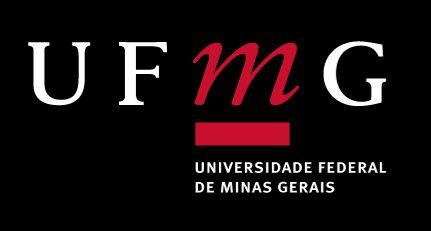Caracterização ecogeomorfológica das áreas de desova de quelônios de água doce (gênero podocnemis) no entorno da Ilha do Bananal, Rio Araguaia
DOI:
https://doi.org/10.35699/2237-549X..13247Keywords:
amazon-turtle, nest placement, ecogeomorphologyAbstract
The biggest concentration of nests of the population of amazon turtle (Podocnemis expansa) of the center-west of Brazil occurs nearby the Bananal Island, in sand bars. In this area it also has important nesting of tracajá (Podocnemis unifilis). Both the species can use the same sand bars, but the nesting places normally do be the same set. Each turtle species takes advantage of the place that presents geomorphologic characteristics appropriate to the hatching success of their eggs. The amazon turtle nest has 50 cm and 70 cm in depth where 40 up to 160 eggs are laid. Tracajás is less demanding about the characteristics of the sand bars, and its nests are shallower (between 10cm and 20cm in depth) and smaller clutch size (from 10 to 25 eggs). This work analyzes the ecomorphologic characteristics of the sand bars that are used as nesting areas. It has a set of factors that influence in the choice and the reproductive success of the Podocnemis genera turtles. The temperature of the nests, due to the sun heat, is controlled by the depth of the egg chamber, by the texture and by the mineralogical composition of the sand bars. The bar area chosen as the nest site emerges in the period of dry and the nesting occurs, generally, between July and October. The return of the rainy season varies throughout the years and it is common that the sudden ascent of the level of the rivers floods the nests, killing the embryos and the hatchling. The nesting places of the amazon turtle in the studied areas have two common characteristics: the nesting usually occurs at highest part of the sandbars and the presence of deep pools in the neighborhoods where the turtles stay before the nesting. Tracajás is less selective in choose the nest places that can occur in diverse environments.
Downloads
References
ALHO, C.J.R., DANNI, T.M.S., PÁDUA, L.F.M. (1984) Influência da temperatura de incubação na determinação do sexo da tartaruga-da-amazônia (Podocnemis expansa, Testudinata: Pelomedusidae). Revista Brasileira de Biologia, 44(3):305-311.
ALHO, C.J.R., PÁDUA, L.F.M. (1982) Sincronia entre o regime de vazante do rio e o comportamento de nidificação da tartaruga da Amazônia Podocnemis expansa (Testudinata: Pelomedusidae). Acta Amazônica, 12(2):323-326.
FAGHERAZZI, S.; MARANI, M. BLUM, L.K. (editores) (2004) The Ecogeomorphology of Tidal Marshes. Coastal and Estuarine Studies 59. American Geophysical Union. 266p.
FERREIRA JUNIOR, P. D. (2003) Influência dos processos sedimentológicos e geomorfológicos na escolha das áreas de nidificação de Podocnemis expansa (tartaruga-da-amazônia) e Podocnemis unifilis (tracajá) na bacia do rio Araguaia. Tese de doutorado, Universidade Federal de Ouro Preto, Ouro Preto, Brasil. 296p.
FERREIRA JUNIOR, P. D., Castro, P. T. A. (2006) Geological characteristics of the nesting areas of the giant Amazon river turtle (Podocnemis expansa) in the CrixásAçu river in Goiás State, Brazil. Acta Amazonica, 36:249-258.
IBAMA – Instituto Brasileiro do Meio Ambiente e dos Recursos Naturais Renováveis (1989) Projeto Quelônios da Amazônia, 10 anos. IBAMA. 119p.
MAMEDE, L.; ROSS, J.L.S.; SANTOS, L.M. (1981) Projeto RADAMBRASIL, Levantamentos de Recursos Naturais, Folha SC.22 Tocantins, Geomorfologia, Rio de Janeiro, MME/Secretaria Geral, 22:197-248.
PRITCHARD, P.C.H. & TREBBAU, P. (1984) . The Turtles of Venezuela. Caracas, Society for the Study of Amphibians and Reptiles, 403p
SOUZA, R.R. & VOGT, R.C. (1994) Incubation temperature influences sex and hatchling size in the neotropical turtle Podocnemis unifilis. Journal of Herpetology, 28(4):453-464.
VALENZUELA, N., BOTERO, R., MARTÍNEZ, E. 1997. Field study of sex determination in Podocnemis expansa from Colombian Amazonia. Herpetologica, 53(3):390-395.
VANZOLINI, P.E. (1967) Notes on the nesting behavior of Podocnemis expansa in the Amazon Valley (Testudines, Pelomedusidae). Papéis Avulsos de Zoologia, 20:191-215.
VILES, H.A., (editor) (1988) Biogeomorphology, Blackwell. 376p.
WEINS, J. A. (2002) Riverine landscapes: taking landscape ecology into the water. Freshwater Biology, 47, 501–515.
Downloads
Published
Versions
- 2022-10-19 (2)
- 2008-12-01 (1)
How to Cite
Issue
Section
License
Copyright (c) 2008 Paulo de Tarso Amorim Castro, Paulo Dias Ferreira Júnior

This work is licensed under a Creative Commons Attribution 4.0 International License.
Os artigos desta revista obedecem a licença Creative Commons — Attribution 4.0 International — CC BY 4.0









